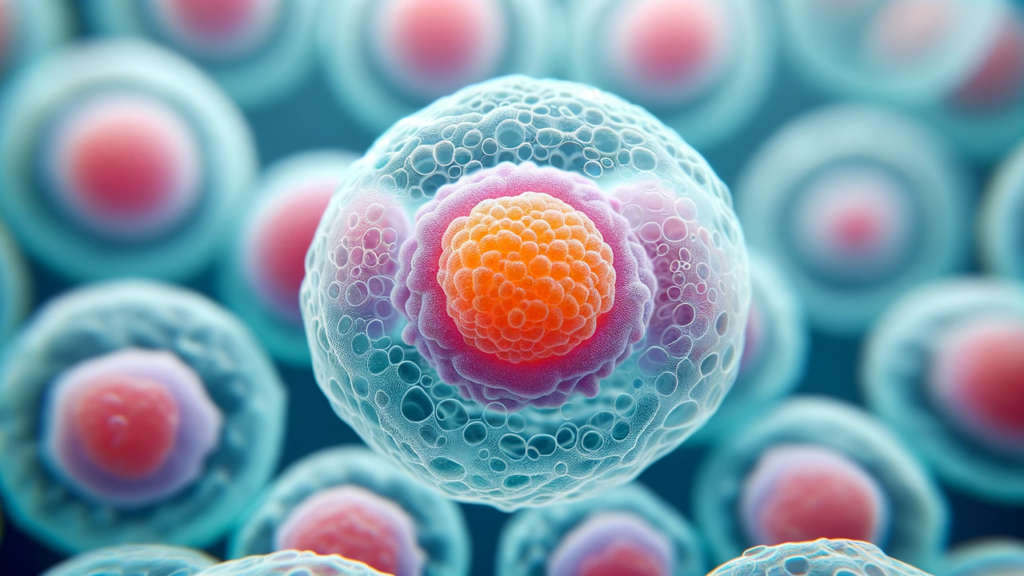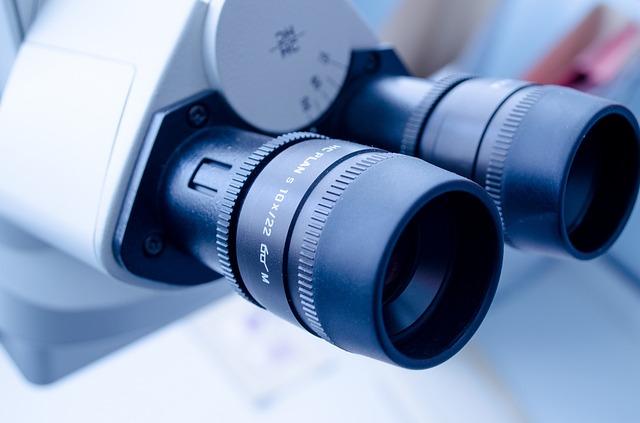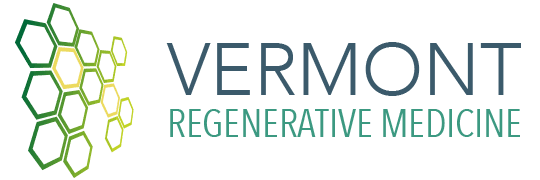Stem Cell Therapy in Vermont: A Comprehensive Guide for VT Residents
In recent years, the Green Mountain State has been painted with more than just the hues of its picturesque landscape; it’s also embracing the vivid palette of regenerative medicine, notably stem cell therapy.
This article aims to provide a comprehensive guide to the residents of Vermont (VT) about the burgeoning field of stem cell therapy.
With a focus on the bioengineering advancements in lung biology, orthopedic conditions, and musculoskeletal treatments, we’ll explore how Vermont is nurturing this medical renaissance.
Whether you are contemplating stem cell therapy for a chronic condition, or merely intrigued by the medical marvels unfolding in your backyard, this piece has something for everyone.

The Genesis of Stem Cell Therapy in Vermont
Stem cell therapy, the use of stem cells to treat or prevent diseases and conditions, is not a new concept. However, its trajectory in Vermont has witnessed a remarkable upward trend over the years.
The inception of stem cell therapy in Vermont can be traced back to the endeavors of pioneering institutions and dedicated physicians. The crux of stem cell therapy lies in its potential to regenerate and repair diseased or damaged tissues, offering a beacon of hope for individuals with chronic ailments.
The historical backdrop of stem cell therapy in Vermont is enriched with a blend of academic excellence and clinical prowess. With the inception of specialized clinics and research centers, Vermont has steadily emerged as a hub for stem cell therapy.
The presence of the University of Vermont and its dedicated stem cell research facilities has significantly bolstered the state’s standing in the stem cell arena.
Vermont Regenerative Medicine: A Closer Look
The journey of Vermont Regenerative Medicine is akin to a seedling growing amidst the fertile landscape of Vermont, gradually burgeoning into a robust tree with diverse branches of medical innovation. At its core, regenerative medicine encompasses a range of cell therapies including stem cell therapy, which aims at harnessing the body’s innate ability to heal and regenerate.
Vermont has been a fertile ground for the growth of regenerative medicine, with a focus on creating a synergy between clinical applications and academic research. The University of Vermont has been a linchpin in this endeavor, fostering a conducive environment for research, development, and application of stem cell therapies. This is a realm where the theoretical intricacies of bioengineering in lung biology converge with practical applications, thereby sculpting a new paradigm in treating lung diseases and other maladies.
The unfolding narrative of Vermont Regenerative Medicine has a subplot of evolving cell therapies that are inching closer to becoming a mainstream treatment modality. The present time is eyed with anticipation as various programs and collaborations are slated to unfold, potentially catapulting Vermont into a hub of regenerative medicine. The Vermont Regenerative Medicine initiative in Winooski is one of the torchbearers in this journey, showcasing the state’s commitment to fostering innovation in stem cell therapy.
The broader picture reveals a healthcare renaissance, with Vermont playing a seminal role in nurturing and advancing stem cell therapies. The fusion of gene therapy with stem cell interventions is one of the many facets of this burgeoning field.
The tale of Vermont Regenerative Medicine is not just about the medical breakthroughs; it’s about building a community of physicians, researchers, and patients united by a common goal – to explore and harness the potential of stem cell therapy for a better tomorrow.
In a nutshell, Vermont is not just witnessing a medical revolution; it’s actively participating and contributing to it, creating a ripple effect that is likely to resonate across the nation.

Bioengineering in Lung Biology: Breathing Life into Research
The sphere of bioengineering in lung biology exemplifies a concoction of innovation and hope, akin to a fresh gust of wind amidst a stagnant milieu.
This domain is where the theoretical constructs of engineering entwine with the biological intricacies of the lung, creating a blueprint for alleviating lung diseases. Vermont has been a fertile ground for this innovative fusion, with a vision to unravel new dimensions in treating lung conditions through stem cell therapy and bioengineering.
The exploration of bioengineering approaches to delve into lung biology is like unlocking a trove of potential interventions to both prevent and treat lung diseases. T
his domain is rife with research endeavors aimed at understanding the cellular and molecular underpinnings of lung diseases, thereby paving the path for stem cell therapies and other regenerative medicine approaches.
The University of Vermont has been a crucible for such pioneering research, fostering a conducive milieu for breakthroughs that could redefine the treatment landscape for lung diseases.
The tale of bioengineering in lung biology is more than a mere academic endeavor; it’s a voyage towards unchartered territories with a promise of hope for individuals afflicted with chronic lung conditions.
The cell therapies evolving from this research are akin to a ray of sunlight piercing through a gloomy sky, offering a new lease of life to individuals. The interdisciplinary nature of this field encapsulates a blend of cellular biology, engineering, and clinical medicine, each playing a pivotal role in advancing the understanding and treatment of lung diseases.
One of the marquee events in this realm is the collaborations among researchers, clinicians, and academicians to create a symbiotic ecosystem conducive for stem cell research and cell therapies.
The dialogues and exchange of ideas among these stakeholders are akin to a confluence of rivers, enriching the landscape of Vermont’s regenerative medicine. The journey towards unraveling the potential of stem cell therapy in treating lung diseases is a testament to Vermont’s commitment to fostering innovation and advancing the medical frontier.
In a nutshell, bioengineering in lung biology is not merely a subject of academic discussion in Vermont; it’s a real, palpable endeavor that holds the promise to transform lives and breathe hope into the fight against lung diseases.
Orthopedic Rejuvenation: A Leap Forward
The realm of orthopedics often narrates the tale of bones and joints besieged by the ravages of time, injury, or disease. However, amidst these narratives, stem cell therapy emerges as a harbinger of hope, promising a narrative of healing and rejuvenation. Vermont, with its burgeoning interest in cell therapies, is gradually becoming a nexus of innovation in orthopedic rejuvenation.
Stem cell interventions in orthopedic conditions are akin to a skilled gardener tending to a garden, ensuring the revitalization of worn-out or damaged areas.
These interventions hold a promise of accelerating healing, reducing pain, and improving functionality, thus returning the narrative to one of mobility and vitality.
The foray into orthopedic surgery has been enriched with the advent of stem cell therapy, which potentially offers quicker recovery and better outcomes.
The impact of stem cell therapy in the sphere of orthopedics extends beyond the surgical table; it potentially redraws the boundaries of what’s achievable in treating orthopedic conditions. The Regenexx procedures, for instance, are making headway as a part of Vermont’s innovative approach towards tackling orthopedic issues. These procedures leverage stem cell and platelet-rich plasma (PRP) therapies to address various orthopedic conditions, showcasing a promising trajectory of stem cell applications in orthopedics.
Vermont’s stride in musculoskeletal stem cell therapy is not a solitary journey; it’s part of a larger narrative of embracing cell therapies to enhance the quality of life of its residents.
The amalgamation of skilled physicians, state-of-the-art clinics, and a conducive regulatory environment has been instrumental in nurturing this field. As stem cell treatments continue to evolve, the synergy between orthopedic surgery and stem cell therapy is anticipated to burgeon, potentially rewriting the script of orthopedic care in Vermont.
In the theater of orthopedic care, stem cell therapy is gradually taking center stage, showcasing a blend of science, innovation, and hope. Vermont, with its proactive approach towards nurturing this field, is poised to be a significant player in unfolding this new chapter of orthopedic rejuvenation.
Musculoskeletal Healing: Beyond the Conventional
The narrative of musculoskeletal healing is often entangled with prolonged recovery periods and a potential compromise on mobility and quality of life.
However, the advent of stem cell therapy is like a new dawn, shedding light on alternative pathways to healing that go beyond the conventional. In the picturesque terrains of Vermont, this novel approach is not merely a concept but a burgeoning reality, offering a blend of science and hope to those navigating the rough terrains of musculoskeletal ailments.
Stem cell therapy in the realm of musculoskeletal healing operates on the principle of harnessing the body’s innate regenerative potential.
This is akin to tapping into a natural reservoir of healing, fostering the repair and regeneration of damaged tissues.
Vermont’s stride in musculoskeletal stem cell therapy is a reflection of a broader ethos of embracing innovative medical paradigms to enhance the wellness and mobility of its residents.
Vermont’s journey in musculoskeletal stem cell therapy is like a river carving its way through the landscape, continuously evolving and enriching the medical terrain.
The state harbors a culture of innovation and learning, where the confluence of academic research, clinical expertise, and patient experiences contribute to a richer understanding and advancement of stem cell therapies in musculoskeletal healing.
The University of Vermont and various stem cell clinics are the vanguards in this medical odyssey, facilitating a platform for research, discussion, and application of stem cell therapies.
It’s a realm where the quest for knowledge meets the compassion for healing, propelling Vermont into the limelight of regenerative medicine.
Furthermore, the dialog between physicians, researchers, and patients is fostering a community geared towards exploring and maximizing the benefits of stem cell therapy in musculoskeletal healing.
The ripple effects of these endeavors transcend beyond the borders of Vermont, contributing to a global narrative of exploring regenerative medicine as a viable and promising avenue for addressing musculoskeletal ailments.
The tapestry of musculoskeletal healing is being intricately embroidered with the threads of stem cell therapy, and Vermont is at the forefront of weaving this narrative.
Through continuous exploration and a community-centric approach, Vermont is not just witnessing but actively contributing to the evolution of musculoskeletal healing, one stem cell at a time.
The University of Vermont: An Epicenter of Innovation
In the quiet serene landscape of Vermont, the University of Vermont stands as a beacon of knowledge and innovation, particularly in the realm of stem cell therapy.
It’s akin to a fertile soil nurturing the seeds of curiosity, research, and practical application of stem cell therapies, with a vision to burgeon into a forest of medical advancements that could redefine the treatment landscape for numerous diseases.
The University of Vermont has been a linchpin in fostering a conducive environment for stem cell research. This initiative isn’t just about delving into the theoretical abyss but about creating a bridge between academic knowledge and real-world medical challenges.
The emphasis on bioengineering and cell therapies demonstrates a symbiotic relationship, where the theoretical constructs are continuously tested and refined in the crucible of practical clinical challenges.
The narrative of the University of Vermont in the realm of stem cell therapy is enriched with collaborations and future programs in stem cell.Furthermore, the University of Vermont Medical Center stands as a testament to the seamless integration of research, education, and clinical practice.
The medical center is a realm where the theoretical constructs of stem cell therapy are put to the litmus test of real-world medical challenges. The feedback loop between the clinic and the laboratory is invaluable, as it fosters a culture of continuous learning, adaptation, and innovation.
In this venture, trainees from around the world converge to explore, learn, and contribute to the burgeoning field of stem cell therapy. They are the torchbearers of the next wave of medical innovation, and the University of Vermont is playing a pivotal role in molding these minds.
In a nutshell, the University of Vermont is not just a spectator in the global narrative of stem cell therapy; it’s an active participant, a crucible of innovation, and a bridge between the academic realm and the real-world clinical landscape.
Through its concerted efforts in fostering stem cell research and therapy, the University of Vermont is etching Vermont’s name in the annals of medical innovation.
Navigating the Regulatory Waters
Embarking on the voyage of stem cell therapy entails more than just the medical intricacies; it’s a journey also navigated by the compass of regulatory frameworks.
In Vermont, the regulatory milieu surrounding stem cell therapy and cell therapies at large is akin to a vigilant sentinel, ensuring the safety and efficacy of these burgeoning medical practices.
As the waves of innovation surge, the regulatory frameworks are evolving to ensure a safe harbor for both practitioners and patients.
The current regulations governing stem cell therapy in Vermont aim to uphold the gold standard of medical practice while fostering an environment conducive for innovation.
These regulations are crafted with a vision to ensure that the stem cell therapy administered is both safe and efficacious.
Moreover, the ethical implications of stem cell therapies are well-considered, ensuring a balanced approach towards harnessing the potential of stem cell therapy.
As we sail towards the horizon of 2023 and beyond, the regulatory landscape is expected to evolve in tandem with the advancements in stem cell therapy and gene therapy.
The potential amendments or new regulations are anticipated to reflect a deeper understanding and acknowledgment of the advancements in cell and gene therapies.
It’s a dynamic dialogue between the realms of innovation and regulation, each influencing the other in a bid to ensure the best outcomes for patients.
The regulatory frameworks are not merely about oversight; they are about building a culture of trust, transparency, and excellence in the practice of stem cell therapy.
They play a crucial role in nurturing a healthy ecosystem where stem cell research and therapies can thrive, thereby propelling Vermont further along the path of medical innovation.
Furthermore, it’s important to note that engaging with a knowledgeable physician to understand the regulatory landscape is crucial for anyone considering stem cell therapy.
It ensures that one is well-informed about the legal and ethical frameworks surrounding stem cell therapy, thereby making informed decisions.
In conclusion, navigating the regulatory waters is an integral aspect of the journey towards embracing stem cell therapy in Vermont. It’s about ensuring a safe and structured pathway amidst the waves of innovation, ensuring that the promise of stem cell therapy is realized in a responsible and effective manner.
Stem Cell Clinics in Vermont: A Snapshot
Amidst the serene vistas of Vermont, a pulse of medical innovation beats within the heart of stem cell clinics.
These clinics are more than just healthcare establishments; they are the tangible manifestation of Vermont’s stride towards embracing the cutting-edge realm of stem cell therapy.
Here, hope and science entwine, offering a glimpse into a future where the body’s inherent ability to heal is harnessed to its fullest potential.
A glimpse into the stem cell clinics in Vermont unveils a robust framework that blends professional expertise, state-of-the-art facilities, and a patient-centric approach.
The cornerstone of these clinics is the utilization of cell therapies to address a spectrum of conditions, transcending the traditional boundaries of medicine.
From orthopedic conditions to lung diseases, the scope of stem cell therapy is continually expanding, mirroring the ethos of innovation that Vermont embodies.
Patient Testimonials: Real Stories from the Green Mountains
In the picturesque settings of Vermont, the real testament to the burgeoning field of stem cell therapy lies in the lived experiences of individuals who have navigated the path of this innovative treatment.
Patient testimonials are like the threads of reality woven into the fabric of medical innovation, offering a tangible narrative of hope, healing, and the transformative potential of stem cell therapy.
The stories emanate from diverse walks of life, each narrative chronicling the journey from chronic pain or debilitating conditions to a realm of enhanced mobility and reduced discomfort.
These testimonials reflect not just the medical efficacy but the holistic impact of stem cell therapy on the quality of life. They echo the sentiment of reclaimed vitality, a life less encumbered by pain, and a positive outlook propelled by the promise of stem cell therapy.
Contacting a Stem Cell Therapy Physician: Your Next Step
As the narrative of stem cell therapy unfolds in the verdant landscapes of Vermont, the step towards contacting a stem cell therapy physician emerges as a pivotal juncture in this journey.
It’s akin to opening a dialogue with a seasoned navigator who can guide you through the intricacies of this medical expedition, ensuring a well-informed and safe voyage towards the realm of regenerative healing.
Reaching out to a stem cell therapy physician is a prudent step towards understanding the nuances of this innovative treatment modality.
It’s about garnering insights into what stem cell therapy entails, its potential benefits, risks, and the pathway towards treatment.
This interaction is the cornerstone of making an informed decision, ensuring that your venture into stem cell therapy is well-charted and supervised by professional expertise.
FAQ
Q: What is stem cell therapy?
A: Stem cell therapy is a medical procedure that uses stem cells to treat or prevent certain diseases and conditions. Stem cells are undifferentiated cells that have the ability to develop into different types of cells in the body.
Q: How does stem cell therapy work?
A: Stem cell therapy works by introducing healthy stem cells into the body to replace or repair damaged cells and tissues. The stem cells can promote the healing process and improve the function of the affected area or organ.
Q: What types of diseases can be treated with stem cell therapy?
A: Stem cell therapy can be used to treat a variety of diseases and conditions, including but not limited to orthopedic conditions, lung diseases, and certain genetic disorders.
Q: How can I contact a stem cell therapy provider in Vermont?
A: You can reach out to a stem cell therapy provider in Vermont by calling 802-859-0000. This number will connect you to a professional who can provide more information and help you schedule a consultation.
Q: Is stem cell therapy available in Vermont?
A: Yes, stem cell therapy is available in Vermont. There are medical facilities and providers in the state that offer this treatment option to residents.
Q: What is the role of gene therapy in stem cell therapy?
A: Gene therapy is sometimes used in conjunction with stem cell therapy to enhance the therapeutic effects. Gene therapy involves introducing genetic material into cells to correct genetic defects or modify their function.
Q: Are there any risks or side effects associated with stem cell therapy?
A: Like any medical procedure, stem cell therapy carries some risks and potential side effects. However, the specific risks and side effects can vary depending on the individual and the type of therapy. It is important to discuss these potential concerns with your healthcare provider before undergoing treatment.
Q: Can stem cell therapy be used for orthopedic conditions?
A: Yes, stem cell therapy can be used as a treatment option for various orthopedic conditions, such as joint pain, arthritis, and tendon or ligament injuries.
Q: Do I need surgery to receive stem cell therapy?
A: In many cases, stem cell therapy can be performed without the need for invasive surgery. The stem cells can be delivered to the targeted area through minimally invasive procedures or injections.
Q: Can stem cell therapy be used for lung diseases?
A: Yes, stem cell therapy shows potential as a treatment option for lung diseases. Researchers are exploring bioengineering approaches to explore lung biology and develop new therapies for lung diseases.
Conclusion
In conclusion, stem cell therapy in Vermont is a tapestry of innovation, hope, and a community-centric approach towards embracing the future of medicine.
The state, with its picturesque landscapes, is not just a haven of natural beauty but also a burgeoning hub of medical innovation.
The synergy between academic research, state-of-the-art clinics, and a conducive regulatory environment is fostering a fertile ground for the growth and application of stem cell therapies.
The narrative of stem cell therapy in Vermont is enriched by the real-life stories of individuals who have experienced the transformative potential of this innovative treatment modality.
Their journeys echo the broader ethos of Vermont’s approach towards stem cell therapy – one rooted in scientific rigor, ethical practice, and a patient-centric approach.
The University of Vermont, the specialized stem cell clinics, and the vigilant regulatory frameworks are the pillars supporting this medical renaissance in Vermont.
Each element plays a crucial role in ensuring that the journey of stem cell therapy is well-guided, well-informed, and holds the promise of a better quality of life for the residents of Vermont.
Vermont Stem Cell Therapy Providers
Here you can find the best stem cell therapy providers in the state of Vermont. Fill out the form and a provider will contact you as soon as possible.





